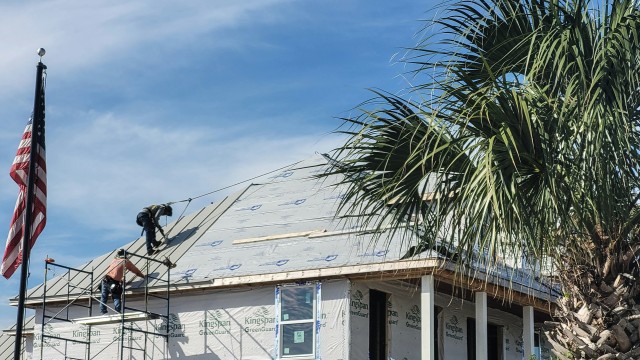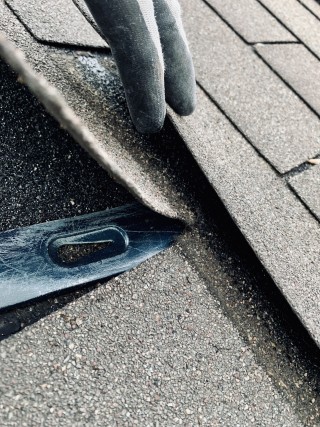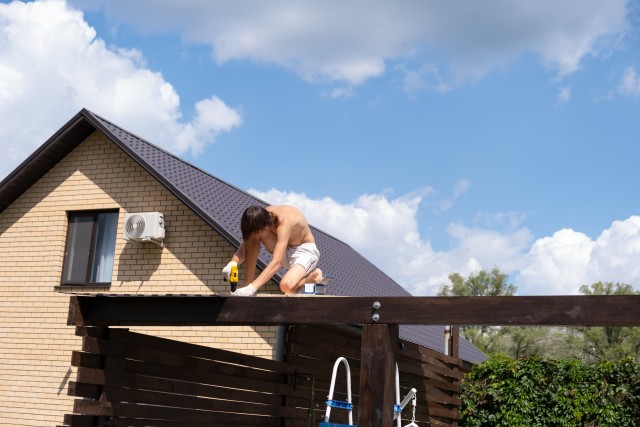Table of Contents
ToggleLeaky Roof And Common Roofing Problems Every Homeowner Should Know
If you notice water stains on your ceilings or walls, it’s likely that you have a leaky roof. Dealing with a leaky roof can be stressful, but there are some options you can consider to fix it.
When it comes to roof repair costs, hiring a professional can be expensive. However, there are also some DIY roof repair options that you can try if you’re handy and willing to put in the effort. Before attempting any repairs yourself, make sure to assess the extent of the damage and determine if it’s something you can handle. Some common DIY options include replacing damaged shingles, sealing cracks and gaps with roofing sealant, or patching small holes with roofing cement. Remember, it’s always best to consult with a professional if you’re unsure or if the damage is severe.
Damaged Shingles
You’ll notice damaged shingles when you see curled edges or missing pieces on your roof. It’s important to address these issues promptly to prevent further damage and ensure the longevity of your roof.
When it comes to roof repair, replacing damaged shingles is a common task that can easily be done by homeowners. To start, make sure you have the necessary tools such as a ladder, roofing nails, and a hammer.
Gently lift the damaged shingle and remove the nails holding it in place. Replace it with a new shingle, making sure to align it properly and secure it with new nails.
Regular maintenance is also key to preventing damaged shingles. Keep your roof clean by removing debris and regularly inspecting for any signs of damage.
Clogged Gutters
To prevent clogged gutters, regularly clean and remove debris from them. Gutter maintenance is crucial in preventing water damage to your home.
When leaves, twigs, and other debris accumulate in your gutters, they can block the flow of rainwater. This can lead to overflowing gutters, causing water to seep into your home’s foundation or walls. Water damage can be expensive to repair and can even lead to mold growth.
By maintaining clean gutters, you ensure that rainwater is directed away from your home, keeping it safe and dry. Make it a habit to clean your gutters at least twice a year, or more frequently if you have a lot of trees around your property.
Regular gutter maintenance is a small task that can save you from big problems in the long run.
Roof Ventilation Issues
Having proper roof ventilation is essential for maintaining a comfortable and energy-efficient home. If you have improper insulation and inadequate attic ventilation, you may face several problems.
Improper insulation can lead to heat loss in the winter and heat gain in the summer, making it difficult to maintain a consistent temperature inside your home. This can result in higher energy bills and discomfort for you and your family.
Inadequate attic ventilation can cause moisture buildup, leading to mold and mildew growth, as well as damage to your roof and structural integrity. It can also contribute to the deterioration of your shingles and reduce their lifespan.
To avoid these issues, it’s important to ensure that your roof is properly insulated and that your attic has sufficient ventilation.
Prolonged Exposure to Harsh Weather
Excessive exposure to harsh weather conditions can cause significant damage to your home’s roof and structure. The constant battering of rain, snow, wind, and sunlight can weaken the materials and compromise the integrity of your roof.
To prevent such damage and extend the lifespan of your roof, regular maintenance is crucial. Schedule professional inspections to identify any issues early on and address them promptly. Regularly clean your gutters to prevent clogging and ensure proper drainage. Trim back any overhanging branches to prevent them from falling onto your roof during storms.
Additionally, consider investing in high-quality roofing materials that are specifically designed to withstand harsh weather conditions. Taking these preventive measures will help protect your home and save you from costly repairs down the line.
Conclusion
Now that you know about these 5 common roofing problems, you can take proactive steps to address them and protect your home.
Don’t ignore a leaky roof or damaged shingles, as they can lead to more serious issues down the line.
Keep an eye on your gutters and make sure they’re clear of debris to prevent clogs.
Additionally, ensure your roof has proper ventilation to avoid moisture buildup.
Lastly, be mindful of prolonged exposure to harsh weather and consider taking preventative measures.
By staying vigilant, you can maintain a healthy and sturdy roof for years to come.





